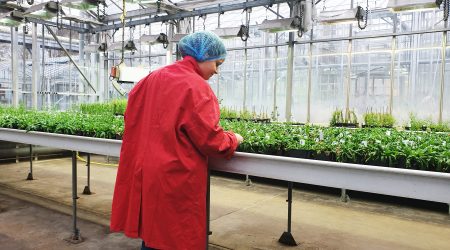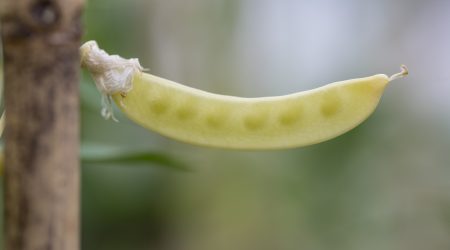A round-up of recent research from the John Innes Centre from summer 2021
Novel haplotype-led approach to increase the precision of wheat breeding
A new technique to enhance gene discovery in wheat, a globally important crop, is set to increase the precision and efficiency of crop improvement. Crop breeding involves assembling desired combinations of traits that are defined by underlying genetic variation. Part of this genetic variation often stays the same between generations, with certain genes being inherited together.
Lead author Dr Jemima Brinton says: “We used strict criteria to distinguish these shared haplotype blocks from near-identical sequences. We argue that this stringency is essential for crop improvement. The breeding process is poised to undergo an enhancement in precision and efficiency through haplotype-led breeding”.
Read ‘A haplotype-led approach to increase the precision of wheat breeding‘
Tomatoes offer affordable source of Parkinson’s disease drug
Tomatoes enriched in the Parkinson’s disease drug Levodopa (L-DOPA) could become a new, affordable source of an essential medicine. The team, led by Professor Cathie Martin, modified the tomato fruit by introducing a gene responsible for the synthesis of L-DOPA in beetroot, where it functions in the production of betalain pigments.
The research team inserted a gene encoding tyrosinase, an enzyme that uses tyrosine to build molecules such as L-DOPA. This elevated the level of L-DOPA in the fruit part of the plant.
An achilles' heel for wheat rust infection
Researchers in the Dr Diane Saunders group identified a gene in wheat, TaBCAT1, that acts to promote rust fungal infection. Disrupting the function of this gene provides resistance to two of the most economically damaging diseases of wheat worldwide – yellow and stem rust.
TaBCAT1 was turned on early during a successful yellow-rust infection. Deleting this gene in wheat mutants dramatically reduced infection, indicating to the team that the gene was an important factor in the ability of rust fungi to cause disease. Dr Pilar Corredor-Moreno, the first author, said “We were amazed to see that removing just this one gene caused a defence response even before the plants were under attack. This likely helped to curtail rust infection before it even had a chance to start”.
Oilseed-rape research challenges previous thinking on flowering time
Research has shed light on the molecular mechanisms that allow crops to synchronise flowering with favourable conditions. In this collaborative study, researchers at the John Innes Centre and the Institute of Biological, Environmental and Rural Sciences (IBERS), Aberystwyth University, used computational modelling to show that it is not individual copies of the FLC gene that determine crop type, but a combined effect of their related dynamics.
“It is these total FLC dynamics that could allow researchers to design crops with genetic combinations that thrive in specific environments” says Professor Richard Morris.
New technology accelerates crop improvement with CRISPR
Researchers know how to make precise genetic changes within the genomes of crops, but the transformed cells often refuse to grow into plants. Now an international team has devised a solution. The Dubcovsky lab at the University of California, Davis, US, has developed a new tool to coax the transformed cells, including those modified with the gene-editing system CRISPR-Cas9, to generate new plants.
Dr Sadiye Hayta tested the new chimeric protein and reported excellent results in wheat, prior to the publication of the work.
Read ‘New technology accelerates crop improvement with CRISPR‘
Research uncovers a critical factor in the assembly of cell-division machinery in bacteria
Researchers have identified a previously undescribed component that is important for the ability of bacteria to divide. In a new study, researchers in the group of Dr Susan Schlimpert identified a novel cell-division protein in Streptomyces, SepH, that directly regulates the assembly of Z-rings.
SepH is a highly conserved protein found not only in Streptomyces bacteria, but also in more distantly related bacteria, including several human pathogens such as Mycobacterium tuberculosis and Corynebacterium diphtheriae.
Read ‘Research uncovers a critical factor in the assembly of cell-division machinery in bacteria‘








